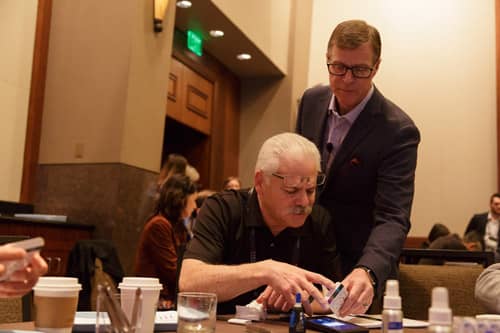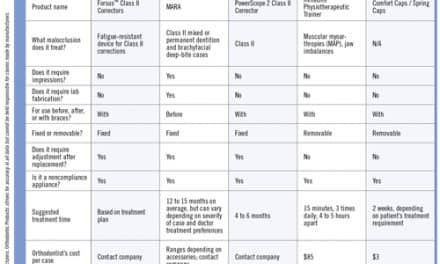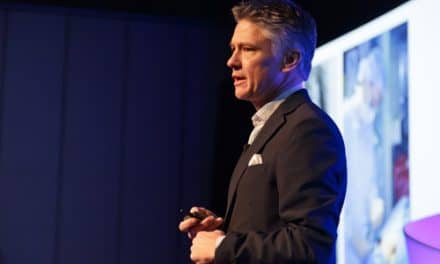Sponsored by
Jep Paschal, DMD, MS, came to the HSO Orthodontic Excellence & Technology™ Symposium in Scottsdale, Ariz, to lead a hands-on activity with Dave Paquette, DDS, MS, MSD, with the goal of showing attendees the workflow for successfully implementing the SAGITTAL FIRST philosophy into their practice with the Carriere Motion 3D Appliance.
For Paschal, the SAGITTAL FIRST philosophy is radical. “It is a very different sequence of treatment for our profession,” he says. “Typically, you’re trained in orthodontics to level and align first. Maybe you do your bends first, and then, halfway to the latter part of treatment, you start focusing on the AP and your post-year resolution of the sagittal. SAGITTAL FIRST puts that on the very front end. So basically, you resolve Class II or Class III and make it a Class I. Once you have that resolution, then you move on to resolving the crowding and the transverse and all those things—and that ends up translating into a frankly shorter treatment time. You get to the end a lot more efficiently than the more traditional approaches.”
In the hands-on activity, titled “SAGITTAL FIRST Integration,” Paschal wanted attendees to not only understand the treatment planning implications of the SAGITTAL FIRST philosophy but also the practice management implications, especially the opportunity for same-day starts.
“From a practice management perspective, the biggest difference with SAGITTAL FIRST is the time that it takes to start a new patient within your practice; it is substantially less chair time, if you will,” says Paschal, adding that what defines the start of a case changes with SAGITTAL FIRST. It’s no longer bonding the entire case, but rather putting the Motion 3D Appliance in place, which Paschal says takes him about 4 minutes. For the patient, the time between sitting down in and getting up from the chair is about 15 to 20 minutes. “There’s a little training [for staff] that needs to go in to that, but it’s an extremely contracted start time for the appointment,” he says.
“In our practice, my goal is 70% to 80% of the time we’re doing a same-day start. This is very easy for us to accommodate [with SAGITTAL FIRST and the Motion 3D Appliance] because now finding 15 minutes of spare time is not an issue; finding an hour of spare time to do a full bonding, that’s significant. So, the staff has to be willing to accommodate that. That is a significant change for them. You, as a practitioner, have to look at that and you have to lead that change.
“The reality is a mom does not want to take their child out of school for one more day. And an adult patient does not want to take off of work again. They would like to get things taken care of that day.”
To encourage his peers to implement same-day starts, he points to the data. “The practices that implement a same-day start philosophy have a higher conversion rate. We know this. We have thousands of data points on this. So, if practitioners aren’t embracing it, they need to look to practitioners that are and learn how.”
Paschal contends that the Carriere Motion 3D Appliances is key to successful outcomes with the SAGITTAL FIRST philosophy. “The Motion 3D Appliance is so efficient. There are so many things built into it that limit movements of teeth or control movements of teeth during that phase that it really is the appliance of choice for this philosophy,” he said.
For Paschal, his hands-on activity with Paquette on day two of the Symposium gave attendees the confidence to go home and implement this approach. “This [activity] provides the last link to translating this [approach] into your practice. [Attendees] have learned the why [of the SAGITTAL FIRST philosophy], this session let them physically experience the how,” says Paschal. “This gives the doctor some comfort. You’re amongst friends in the room.” OP










